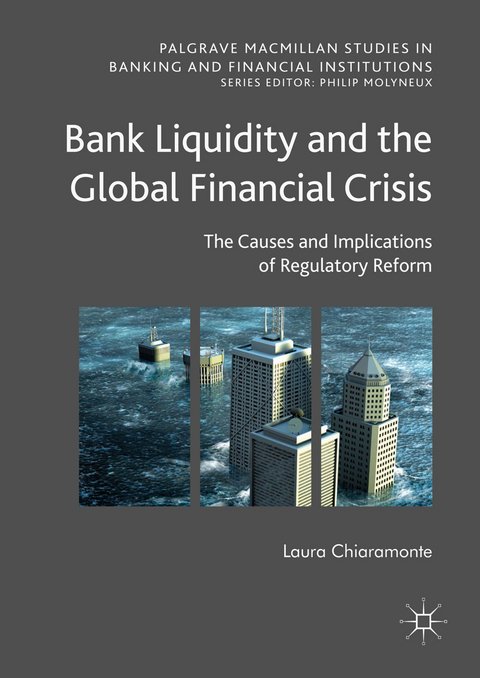
Bank Liquidity and the Global Financial Crisis
Springer International Publishing (Verlag)
978-3-319-94399-2 (ISBN)
One of the lessons learned from the Global Financial Crisis of 2007-9 is that minimum capital requirements are a necessary but inadequate safeguard for the stability of an intermediary. Despite the high levels of capitalization of many banks before the crisis, they too experienced serious difficulties due to insufficient liquidity buffers. Thus, for the first time, after the GFC regulators realized that liquidity risk can jeopardize the orderly functioning of a bank and, in some cases, its survival. Previously, the risk did not receive the same attention by regulators at the international level as other types of risk including credit, market, and operational risks. The GFC promoted liquidity risk to a significant place in regulatory reform, introducing uniform international rules and best practices. The literature has studied the potential effects of the new liquidity rules on the behaviour of banks, the financial system, and the economy as a whole.
This book provides a comprehensive understanding of the bank liquidity crisis that occurred during the GFC, of the liquidity regulatory reform introduced by the Basel Committee with the Basel III Accord, and its implications both at the micro and macroeconomic levels. Università
Cattolica del Sacro Cuore contributed to the funding of this research project and its publication.
Laura Chiaramonte is Associate Professor in Banking and Finance at Università Cattolica del Sacro Cuore of Milan, Italy. She gained her Bachelor's in Business Economics and PhD in Business Administration from the University of Verona, Italy. She has been working as a visiting researcher at the Cass Business School, City University of London, UK since 2010. Her main research includes the role of bank credit default swaps (CDSs) in the financial crisis of 2007-9, the role of cooperative banks in promoting bank stability, the reliability of the Z-score in predicting bank failure, and the role of the Basel III capital and liquidity ratios in reducing bank distress phenomena. Her research has been published in journals, such as The European Journal of Finance, The British Accounting Review, European Financial Management, and Financial Markets, Institutions and Instruments.
1. Introduction.- 2. The Concept of Bank Liquidity and its Risk.- 3. The Bank Liquidity Issues During the Subprime Crisis.- 4. The Role of Central Banks and the Interbank Market in Managing Bank Liquidity during the Global Financial Crisis.- 5. Bank Liquidity Regulation Before the Global Financial Crisis.- 6. The New International Liquidity Regulatory Framework for Banks.- 7. The Implications of Basel III Liquidity Regulatory Reform.- 8. Conclusion.
| Erscheinungsdatum | 22.07.2018 |
|---|---|
| Reihe/Serie | Palgrave Macmillan Studies in Banking and Financial Institutions |
| Zusatzinfo | XXIII, 200 p. 10 illus. |
| Verlagsort | Cham |
| Sprache | englisch |
| Maße | 148 x 210 mm |
| Gewicht | 423 g |
| Themenwelt | Geschichte ► Teilgebiete der Geschichte ► Wirtschaftsgeschichte |
| Wirtschaft ► Betriebswirtschaft / Management ► Finanzierung | |
| Betriebswirtschaft / Management ► Spezielle Betriebswirtschaftslehre ► Bankbetriebslehre | |
| Wirtschaft ► Volkswirtschaftslehre ► Finanzwissenschaft | |
| Schlagworte | Banking • banking regulation • Bank Liquidity • Bank liquidity risk • Basel III • European banking • Financial Crises • Financial Crisis • liquidity • solvency |
| ISBN-10 | 3-319-94399-5 / 3319943995 |
| ISBN-13 | 978-3-319-94399-2 / 9783319943992 |
| Zustand | Neuware |
| Haben Sie eine Frage zum Produkt? |
aus dem Bereich


